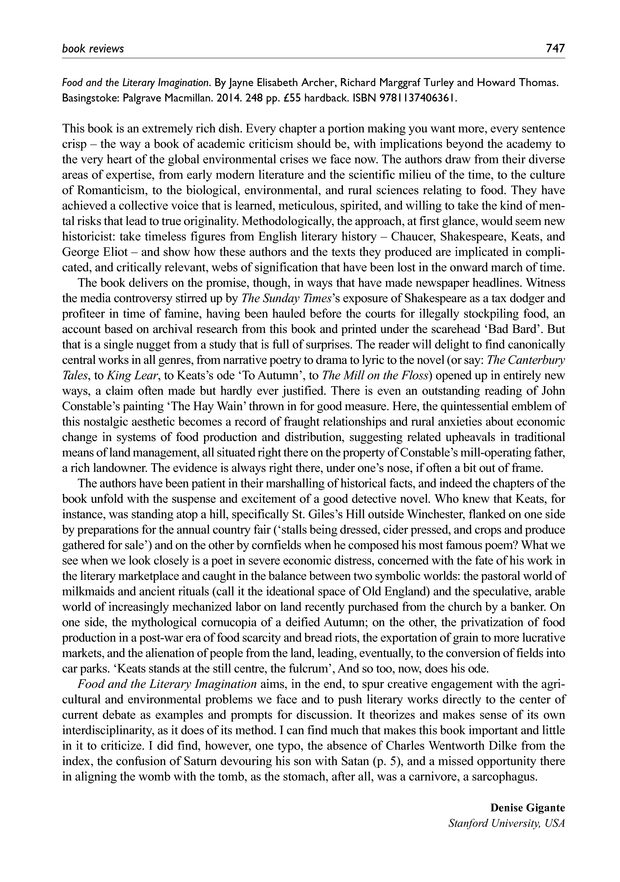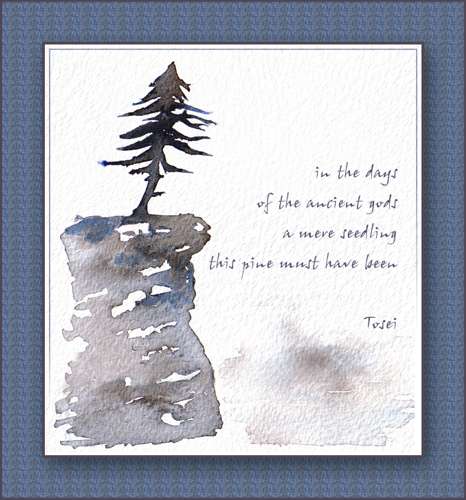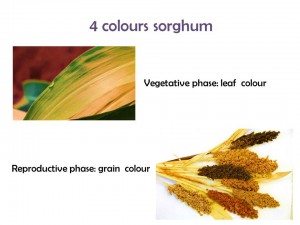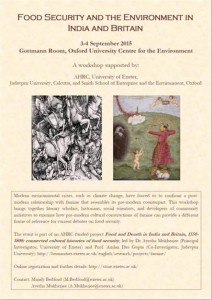We think this review of Food and the Literary Imagination ‘gets’ it in one.
Lord Darnley’s skull isn’t Lord Darnley’s skull
Using the technique of craniofacial superimposition, Emma Price at Jordanstone College of Art and Design has shown pretty conclusively that a skull in Edinburgh University’s collection, believed to be that of Darnley, isn’t the noble lord’s after all. Read more here.
In an earlier post we pointed out the connection between Darnley and darnel, the wheat look-alike that isn’t a wheat at all. An interesting convergence.
Plant ageing – science and metaphor
Sid Thomas was an invited speaker at Treeworks Seminar 21 Transformational Nature, held at Kew Gardens, 17 May 2016. Here’s a summary of his two lectures.
Trees are at one end of a spectrum of plant life histories running from extreme perennials to ephemeral annuals. In these two lectures I examine the evolutionary relationship between annuality and perenniality and its implications for the form and longevity of trees. I consider how the durations of individual cells and organs are integrated into the lifespan of the whole plant. The discussion will also compare and contrast the woody plant life form with that of colonial organisms and will consider the role of meiotic and mitotic cell division in rebooting juvenility. By 370 million years before the present, the primeval forest was the dominant terrestrial biome. And then, 70 million years ago, a new group of plants, the grasses, appeared on the scene and set about challenging the dominance of trees by exploiting fire, a devastating new weapon in the evolutionary arms-race. We may now consider it enlightened and civilized to value and even venerate trees; but mankind’s age-old relationship with the forest has overwhelmingly taken the form of slash and burn. These lectures look at cultural responses to the history of the three-way interdependence of people, trees and grasses and the role that lifespans play in this relationship.
Shakespeare and hunger
Richard Marggraf Turley was interviewed for a nice piece in The Salt that references our work. And we even turned up in the Christian Science Monitor.
Article on Darnel By Sarah Laskow
Sarah has written a very nice piece on the darnel story, with excellent illustrations, in the online magazine Atlas Obscura.
About Darnel as a family and given name
‘Darnel(l)’ is a common given or family name (see, for example, Smith and Conley 1954) of English origin, as an online search for the unqualified term will testify. People surnamed Darnell account for about 36 per million of the current population of the UK, 66 per million in the USA and 12 per million in Australia. Genealogy sources agree that the name is directly derived from the plant and there is reason to trace some families to the Yorkshire village of Darnell (Lower 1860), now Darnall, a suburb of Sheffield, where darnel was reputedly grown. According to the Internet Surname Database, the first recorded spelling of darnel as a family name in England is of one Godwine Dernel (1095, Abbey of Bury St Edmunds, Suffolk). Darnell as a given name is probably derived from the family name.
The surname ‘Darnley’ represents between 1 and 5 per million of the populations of the UK, USA and Australia. Of all the bearers of the name ‘Darnley’, one stands out as of particular significance in history and literature. The father of James I of England and VI of Scotland was Henry Stuart, Lord Darnley; the House of Stuart was, properly, the House of Darnley and Stuart. The ‘ley’ element signifies ‘lea’, hence a field (a ‘lea’) of darnel: for example, in Stow (1580), the spelling of Henry Stuart’s name is ‘Darnley’ and ‘Darneley’, and in the second volume of Holinshed (1586) it is ‘Darneleie’. As we have shown (Thomas et al. 2016), where there is darnel, there is treachery and toxicity: Lord Darnley was murdered in 1567, an event of major political significance at the time and through to the Stuart succession in 1603. Hatfield (2004) has pointed out the parallels between the poisoning of Hamlet’s father and the murder of Darnley. Furthermore, it is significant that one of Darnley’s titles was Duke of Albany; in King Lear, Albany (an anachronistic character – the dukedom was first created in 1398, centuries later than the period of the play) is husband of Lear’s daughter Goneril, and is cuckolded by Edmund. Elsewhere (Archer et al. 2014) we have discussed how, in King Lear, allusion to darnel, and the figure of Edmund – the ‘bastard’, a contemporary term for a malignant weed – encode Shakespeare’s interrogation of the Union of the Crowns.
Knowledge of darnel the plant is fading as intensive agriculture spreads and people depart the land for the cities. Its historical and religious significance subside into history. But it lives on in the names of people, most of whom who are unlikely to be aware of the richness of its meaning.
Archer, J. E., R. Marggraf Turley and H. Thomas. 2014. Food and the Literary Imagination. Palgrave Macmillan, Basingstoke.
Hatfield, A. 2004. Shakespeare and Renaissance Politics. Thomson Learning, London, pp. 87-8.
Holinshed R. et al. 1586. The Second Volume of Chronicles (n. pl.: n. pub.), p. 381.
Internet Surname Database: www.surnamedb.com [accessed 17 March 2016].
Lower, M. A. 1860. Patronymica Britannica: a Dictionary of the Family Names of the United Kingdom. J. R. Smith, London.
Smith, H. C. and A. D. Conley. 1954. The Darnall, Darnell Family. American Offset Printers.
Stow, J. 1580. The Chronicles of England. Printed by Ralphe Newberie for Henrie Bynneman, London, p. 1131.
Thomas, H., J. E. Archer and R. Marggraf Turley. 2016. Remembering darnel, a forgotten plant of literary, religious, and evolutionary significance. Journal of Ethnobiology, 36: 29-44.
The Curse of Darnel
Publications on food and literature
This project is a case study in cultural hybrid vigour. As well as contributions to numerous symposia, workshops and lecture events, there have been twelve substantial publications – listed below, with links to reprints where available. And we may not be finished yet.
H Thomas, J E Archer, R Marggraf Turley. 2016. Remembering darnel, a forgotten plant of literary, religious and evolutionary significance. Journal of Ethnobiology 36: 29-44 [Read/download]
H Thomas, R Marggraf Turley, J E Archer. 2016. The millers’ tales: sustainability, the arts and the watermill. In: Literature and Sustainability (eds L Squire, A Johns-Putra, J Parham) Manchester: University Press (in press)
J E Archer, R Marggraf Turley, H Thomas. 2015. “Soper at oure aller cost”: the politics of food supply in the Canterbury Tales. Chaucer Review 50: 1-29 [Read/download]
Abstract: The reward for the best storyteller among the pilgrims in Chaucer’s Canterbury Tales is a meal: “soper at oure aller cost” (I 799). This narrative detail gives tangible form to the traditional association between literary creation and arable farming. Chaucer’s diverse pilgrims and the tales they tell are woven together by the language, tropes, and contemporary concerns relating to anxieties about the production, supply, distribution, purity, and quality of food. Focusing on the figure of the Plowman, the apocryphal Plowman’s Tale, and the Reeve’s Tale, and reading them in the context of sociopolitical and religious dissent (the 1381 Peasants’ Revolt and Lollardy respectively), this essay traces the ways in which the Canterbury Tales engages with the politics and poetics of food supply in the final decades of the fourteenth century.
J E Archer, R Marggraf Turley, H Thomas. 2015. “Moving accidents by flood and field”: The arable and tidal worlds of George Eliot’s ‘The Mill on the Floss’. English Literary History 82: 701-728 [Read/download] http://sidthomas.net/wp/wp-content/uploads/2015/07/82.2.archer.pdf
J E Archer, R Marggraf Turley, H Thomas. 2014. Reading Shakespeare with the grain: sustainability and the hunger business. Green Letters 19: 8-20 [Read/download]
J Archer, R Marggraf Turley, H Thomas. 2014. Food and the Literary Imagination. London: Palgrave
JE Archer, R Marggraf Turley, H Thomas. 2013. Reading with the Grain: Sustainability and the Literary Imagination. INSPIRE-ASLE-UKI Essay Competition Winner [Read/download]
R Marggraf Turley, JE Archer, H Thomas. 2012. On St Giles Hill. Keats’s Ode ‘to Autumn’ in the Market. Times Literary Supplement No. 5723 (5 December 2012) pp 14-15
R Marggraf Turley, H Thomas, JE Archer. 2012. Keats, ‘To Autumn’, and the New Men of Winchester. Review of English Studies 63: 797-817 [Read/download]
JE Archer, H Thomas, R Marggraf Turley. 2012. The Autumn King: remembering the land in King Lear. Shakespeare Quarterly 63: 518-543 [Read/download]
H Thomas, J Archer, R Marggraf Turley. 2011. Evolution, physiology and phytochemistry of the psychotoxic arable mimic weed darnel (Lolium temulentum L). Progress in Botany 72: 73-104 [Read/download]
R Marggraf Turley, H Thomas, J E Archer. 2010. A tragedy of idle weeds. Times Literary Supplement No. 5577 (19 February 2010) pp 14-15 [Read/download]
Food and the Anthropocene
Sid Thomas and Richard Marggraf Turley participated in Strata: Art and Science Collaborations in the Anthropocene, a Symposium held at Aberystwyth University Arts Centre on 15 January 2016.
Here’s the abstract of the paper Sid delivered.
Green sorghum, yellow sorghum, red sorghum, white sorghum
Howard Thomas, Jayne Elisabeth Archer, Richard Marggraf Turley, Helen Ougham
Sorghum is a staple dry land subsistence food crop for millions of resource-limited farmers in the fragile drought-prone semi-arid tropic regions of Asia, Africa and Latin America. From the perspective of agricultural sciences and the literary and visual arts, this paper explores the biological significance of colour in the vegetative and reproductive phases of the sorghum lifecycle, and considers the broader Western cultural significance of those two colour stages in crops, of which sorghum is an example. By being in the front line of responses to climatic and environmental change, sorghum is a target for the application of advanced agricultural technologies (the ‘New Green Revolution’). But, as this paper concludes, the history of social, political and cultural encounters with applications of science in the areas of crop and environmental sciences is not a happy one, with difficult implications for dealing with the challenges of the Anthropocene.
Food security in Britain and India
Jayne Archer and Howard Thomas were invited participants in a meeting titled Food Security and the Environment in India and Britain: Historical and Cultural Perspectives, held on 3-4 September 2015 at Oxford University Centre for the Environment.
Here’s the abstract of the paper presented by Jayne at this meeting.
Food and the Literary Imagination
Howard Thomas, Jayne Elisabeth Archer and Richard Marggraf Turley
Although their terminology may have differed, former ages were acutely aware of the importance of food security. Incorporating land ownership and management; food purity and processing; the integrity of the food chain; and issues of distribution and pricing, food security has been at the century of public policy in England (later Britain and the UK). It has also been central to the English literary tradition, informing both the evolution of its language and metaphors and the development of genre and narrative. Despite this, it is often assumed that ‘elite’, canonical writers such as Chaucer, William Shakespeare, John Keats, Charles Dickens and George Eliot knew relatively little about the worked land and that their representations of plants, weeds and the environment are confected abstractions recycled from earlier writers.
Our paper draws on research presented in Food and the Literary Imagination (Palgrave Macmillan, 2014), a monograph co-authored by two literary historians (Richard Margraff Turley and Jayne Elisabeth Archer) and a plant scientist (Howard Thomas). Using a synthesis of literary-historical and scientific methodologies, and using selected literary examples including works by Shakespeare, Dickens and George Eliot, we argue that writers of the past have represented and responded to aspects of food security strikingly similar to those we face in the early-twenty-first century. In some cases, we will show, writers of the historical past anticipated recent scientific discoveries. Attending to food politics in the work of past writers is important, not simply for the experiential and traditional knowledge they record – knowledge we have neglected or forgotten – but because the arts, through which imaginative responses to the challenges we face can be addressed most powerfully, is a crucial component to any successful approach to food security in the present.





